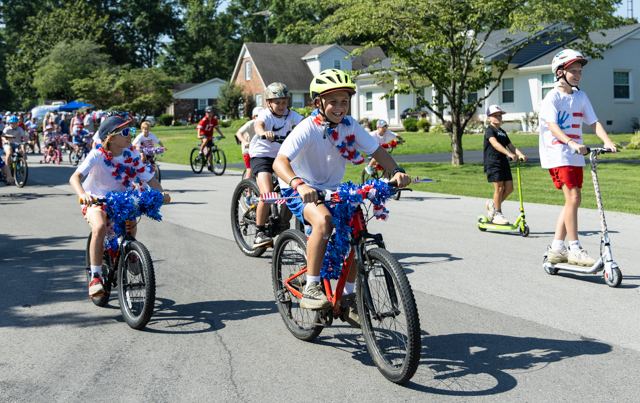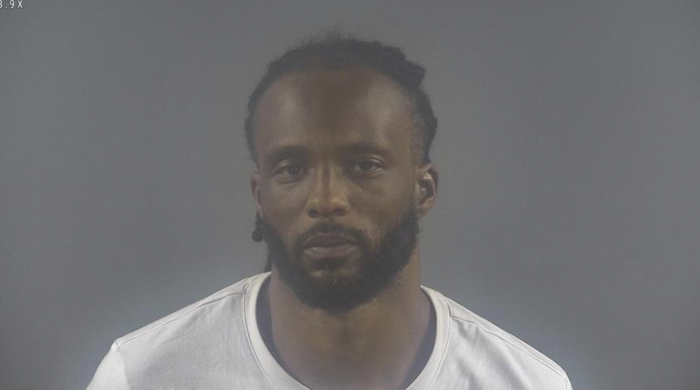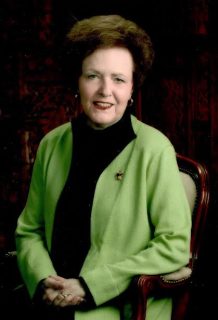Remembering David Hawpe
Published 12:00 am Sunday, August 8, 2021

- DAVID HAWPE
Most people outside Louisville probably have never heard of David Hawpe. But there was a time, while serving as managing editor of the influential Louisville Courier-Journal, Hawpe’s opinion mattered.
I first met Hawpe in 1963, when I transferred from Western Kentucky University to the University of Kentucky to pursue studies in journalism.
He was one of the first fellow students I met. He was already a rising star in journalism and was in the top echelon of the school’s student newspaper, The Kentucky Kernel. I quickly realized he was someone I wanted on my side if I achieved my goal of writing sports for The Kernel.
I was told freshmen writers did not get bylines at The Kernel, but Hawpe did. I also heard he was on scholarship. Now that impressed me. Most of the guys I knew on scholarship were athletes. I was serving meals at a sorority house and selling clothes at a men’s store … nothing close to a scholarship.
Although we were friends, I can’t say I knew Hawpe well. We never drank a beer together at The Nook or danced the night away at Danceland or Joyland. You see, I was a frat boy and journalist. Hawpe was a journalist through and through.
Hawpe was a hard-charger who wore dark-rim glasses and looked a bit “nerdish” with an opinion on everything and not bashful about giving it. In a way, he was pompous about it.
In spite of Hawpe being an admitted liberal when it came to politics, and me being a bit on the conservative side, we were friends. In fact, he was the reason I added my middle initial to my byline, Gary P. West. I noticed in college he used his, David V. Hawpe. I asked him about it.
“I think adding your middle initial makes a byline more noticeable,” he told me.
I took heed and after college I began using it. It stuck. I did notice, however, that as Hawpe moved up the professional ladder, he dropped the “V.” I guess he felt he no longer needed it. I still use mine.
Hawpe was older than me. He was born Feb. 4 in Pikeville, while a day later – on Feb. 5 – I was born in Indianapolis. David didn’t stay in the mountains long, nor I in Indiana. I know nothing about him doing anything athletically. Perhaps he did and I didn’t know about it. I do know after Male High School he headed to UK.
Although Louisville was Hawpe’s home he never, and I mean never, lost his love for the school in Lexington, later becoming a regent.
Some felt Hawpe’s unabashed adulation for UK, his alma mater, carried over to the Courier-Journal’s sport pages. One of those was former U of L director of athletics Bill Olsen.
“We had someone who measured the column inches in print we got in comparison to UK’s,” he said. “It wasn’t close. I met with Hawpe about it. He would just smile and say, ‘I’ll take a look at it.’ At the time I wasn’t a big fan of his, but later I wish I had gotten to know him better.”
A lost fact I have not seen is how he gained prominence as a writer. And some of it was all because of athletics.
Hawpe’s path crossed with that of UK football coach Charlie Bradshaw in 1962, after Blanton Collier was fired, even though he had a record of 41-36-3. No one knew it at the time, but it was the beginning of the end for Bradshaw. (Collier’s overall record at UK makes him the last football coach to leave the school with a winning record, and there have been 10 of them since 1961. Collier went on to coach the Cleveland Browns to the NFL title in 1964 while at the same time getting paid $50,000 by UK. His Browns record was 76-34-2.)
The new UK coach had played at Kentucky and been an assistant to Bear Bryant at Alabama. Bradshaw was sure he could mimic his old coach and turn a lackluster football team into one of national caliber.
It wasn’t long before the 88-player roster had shrunk to 32. Hawpe was all over it, and it wasn’t like he didn’t know what was going on behind the curtains that surrounded the football practice fields.
Even though at Male High School, Hawpe was not an athlete himself, he was good friends with several. It just so happened that four of them had signed grant-in-aid football scholarships at UK. Hawpe had four moles inside Bradshaw’s team and they kept their old friend up to speed with what was going on.
Bradshaw knew the talk, but walking the walk would have to wait. In an evangelistic way he touted his Baptist religion and talked about all of the good mamas and papas of the boys he was recruiting. But above all, he said, “everyone has to be accountable.”
What Bradshaw was saying sounded perfect and played well to small Kentucky towns across the state.
When Male High School buddies Jim Bolus, Lindsey Able, Joe Blankenship and Tommy Hedden became a statistic by leaving the team; they like everyone else before and after were referred to as “quitters,” “If you quit here you’ll quit in life,” Bradshaw told them.
Many of those who left the program went on to become doctors, lawyers, judges, corporate executives and coaches. A few became great football players at other schools.
One was Dale Lindsey.
He played at Bowling Green High School along with quarterback Joe Bill Campbell. Both left UK and enrolled at Western Kentucky University, where they played on a championship team.
Lindsey went on to play nine years for the NFL’s Browns at middle linebacker. A quitter, I don’t think so.
Lindsey’s high school coach, Jim Pickens, told Bradshaw that he ran off the thoroughbreds and kept the mules.
“You can’t win with mules on Saturday,” Pickens told the UK coach. He went on to say not to bother recruiting any Bowling Green High School players in the future.
You can call it “football down south,” if you want, but so much of Bradshaw’s coaching style was being swept under the rug until Hawpe tightened his journalism grip on the happenings. With the help of former players, he took the sorry state of affairs with the Kentucky program nationally.
Practices were brutal, often lasting for hours with only salt pills – no water. Under Bradshaw’s watch players were seriously injured – never playing football again. One even died.
I attended two or three of Bradshaw practices when I started writing Kernel sports. He would stand atop his two-story tower with megaphone at the ready. And when he had seen enough he sprinted down the stairs in what seemed like taking two steps at a time. At one point while I was at one of the practices he pushed a player so hard mentally and physically that the player slugged Bradshaw. Immediately he was mauled by several UK assistant coaches. I, too, had a few inside informants … no less than six players, plus four so-called “quitters.” When they showed up at our fraternity house, they looked like they had been in a car wreck and walked like it.
A question I’ve always had is where were UK administrators? How can a major college football team drop from 88 to 30 players in a year and no one in authority … real authority, stand up and ask “what is going on here?” Where was UK President Frank Dickey? Where was the AD Bernie Shively?
It was Hawpe who didn’t just ease this sordid story out of the darkness, but lit a rocket under it. For Hawpe, it was easy. He was a very good journalist, knew what was really going on and by this time had become uncomfortable with big-time college sports. He was much more than the arts, history and politics that he enjoyed covering.
A pair of writers, Shannon Ragland and Henry Rippetoe wrote extensively about the Bradshaw days at Kentucky.
Ragland, an attorney in 2007, put together a book detailing the demise of the smooth-talking UK coach, who after eight years managed a 25-41-4 record with some of the best talent in school history. Can you say Rodger Bird, Rick Norton, Sam Ball, Larry Seiple, Bob Windsor and Jeff VanNote?
Ragland’s “The Thin Thirty,” brought to light a football program infused with a gay sex scandal, brutality and even an alleged fix of one of the Kentucky games.
It was common knowledge that beginning in 1959 two high-profile gays in Lexington, Lonnie Winter and Jim Barnett, set their sights on UK and Eastern Kentucky University football players in Richmond.
Ragland, in his book, wrote that with their fine clothes, deep pockets and posh home, Lonnie and Jim cut quite a swath cruising the streets of Lexington in their Cadillac convertible in search of talent.
Blanton Collier, the fired coach before Bradshaw, was completely unaware of what was taking place involving some, but not all, of his players. It had become common knowledge that Roy Sherer Jr. spent time at Lonnie and Jim’s home in Lexington. It was Sherer who had changed his name to Rock Hudson when Hollywood came calling.
It was a scandal, and say what you want about Bradshaw, he shut it down and sent Lonnie and Jim packing out of Lexington.
There’s a lot to wrap your arms around in Shannon Ragland’s book, but it’s worth the read.
Hawpe’s contribution to journalism lasted for decades. Later in his Courier-Journal days, he continued to write an occasional column. I stayed in touch and sometimes sent him a book I had written. Not expecting anything in return, I was pleasantly surprised one day when I opened my paper and saw a column he had written about one of them.
Even though Hawpe had retired, at 78 years old, he was still a journalistic force. He will be missed.
– Gary P. West can be reached at westgarypdeb@gmail.com. His column appears monthly.






